Follow us on Telegram for the latest updates: https://t.me/mothershipsg
Educating children about the environment starts young.
At least, that's what Shaun Lim, the Subject Head for National Education and Social Studies at Boon Lay Garden Primary School, believes.
The primary school has crafted a structured 6-year programme to equip students with knowledge about environmental issues, and also to give them an authentic "agricultural experience".
To achieve this, the school has installed a set of vertical grow towers and a hydroponic farm, and involves the students in tending the crops.
Mothership was privileged to catch some of them in action.
Harvest
We are brought to an open courtyard in the school, where students from the Environmental Club are milling around the orange grow towers for a briefing.
These 20 towers were the school's first investment into sustainable farming, and they were installed in 2021.
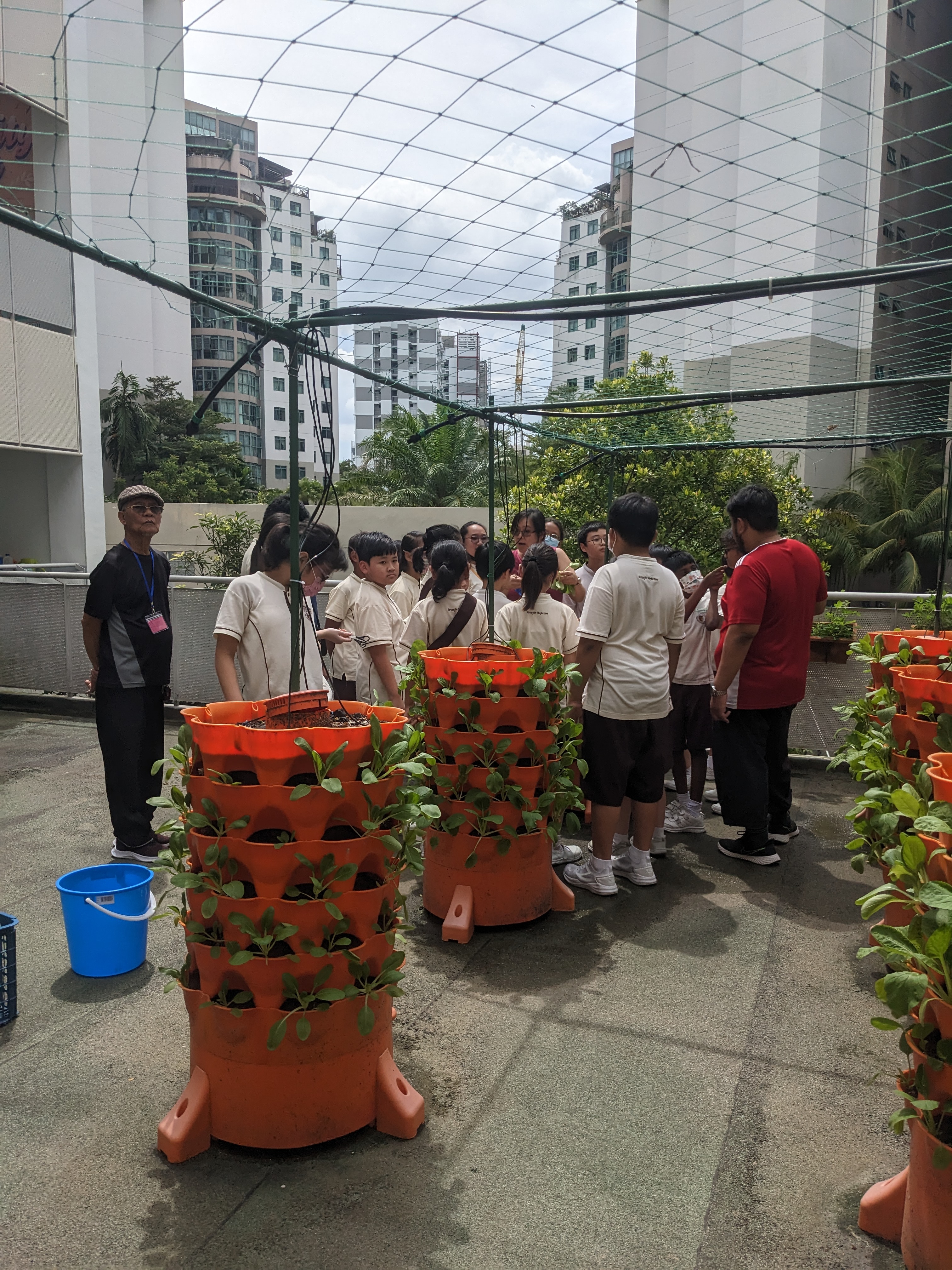 Photo via Daniel Seow.
Photo via Daniel Seow.
The towers comprise planters that are stacked in layers. These are lined with soil and there is a hollow tube in the centre of each tower that contains composting materials.
The teacher-in-charge offers to let us try adding earthworms into the composting mixture, which we politely decline.
The harvest of the day was chye sim.
Soon, the students get to work with scissors, snipping off the juicy green leaves and bringing them over in bundles to a container.
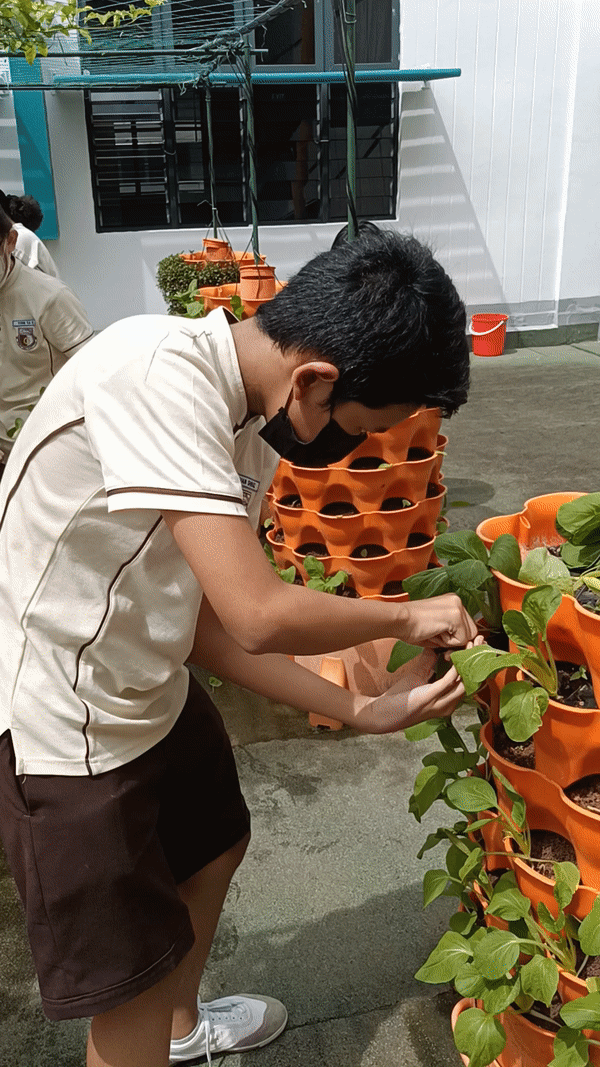 Video via Daniel Seow.
Video via Daniel Seow.
 Photo via Daniel Seow.
Photo via Daniel Seow.
Once the containers are filled with chye sim, it's time to bring them into the nearby classroom for packing.
First, the teacher instructs them to lay the chye sim out on the table.
This is to dry the vegetables and reduce the moisture in the packed bags. If not, the students are told, the vegetables will spoil quicker.
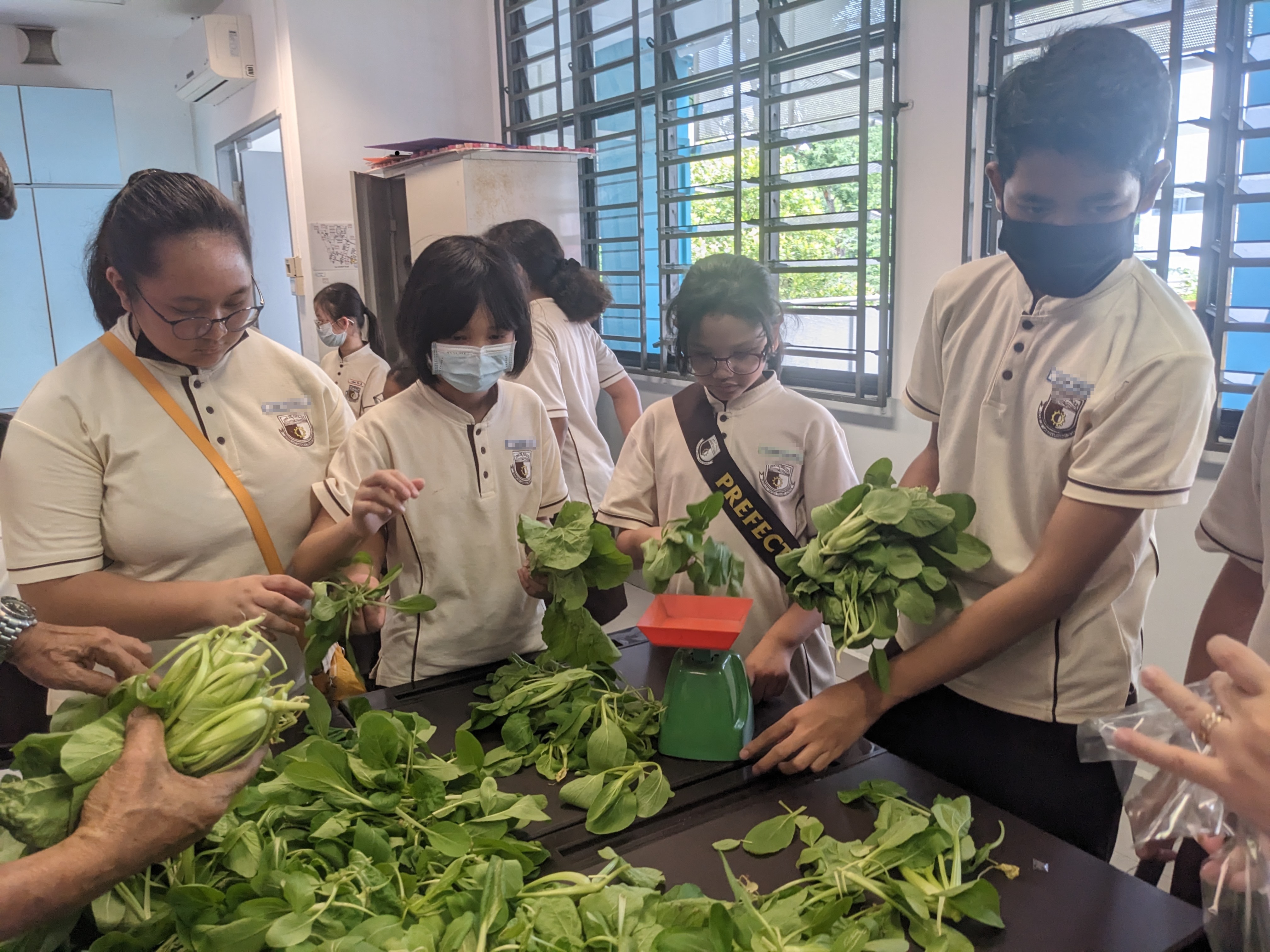 Photo via Daniel Seow.
Photo via Daniel Seow.
A typical harvest is around 8kg of vegetables, with 9kg on a good day. Wow!
Tasks are delegated among the students, and some of them are responsible for weighing the vegetables for packing. Each packet is to contain 200g of chye sim.
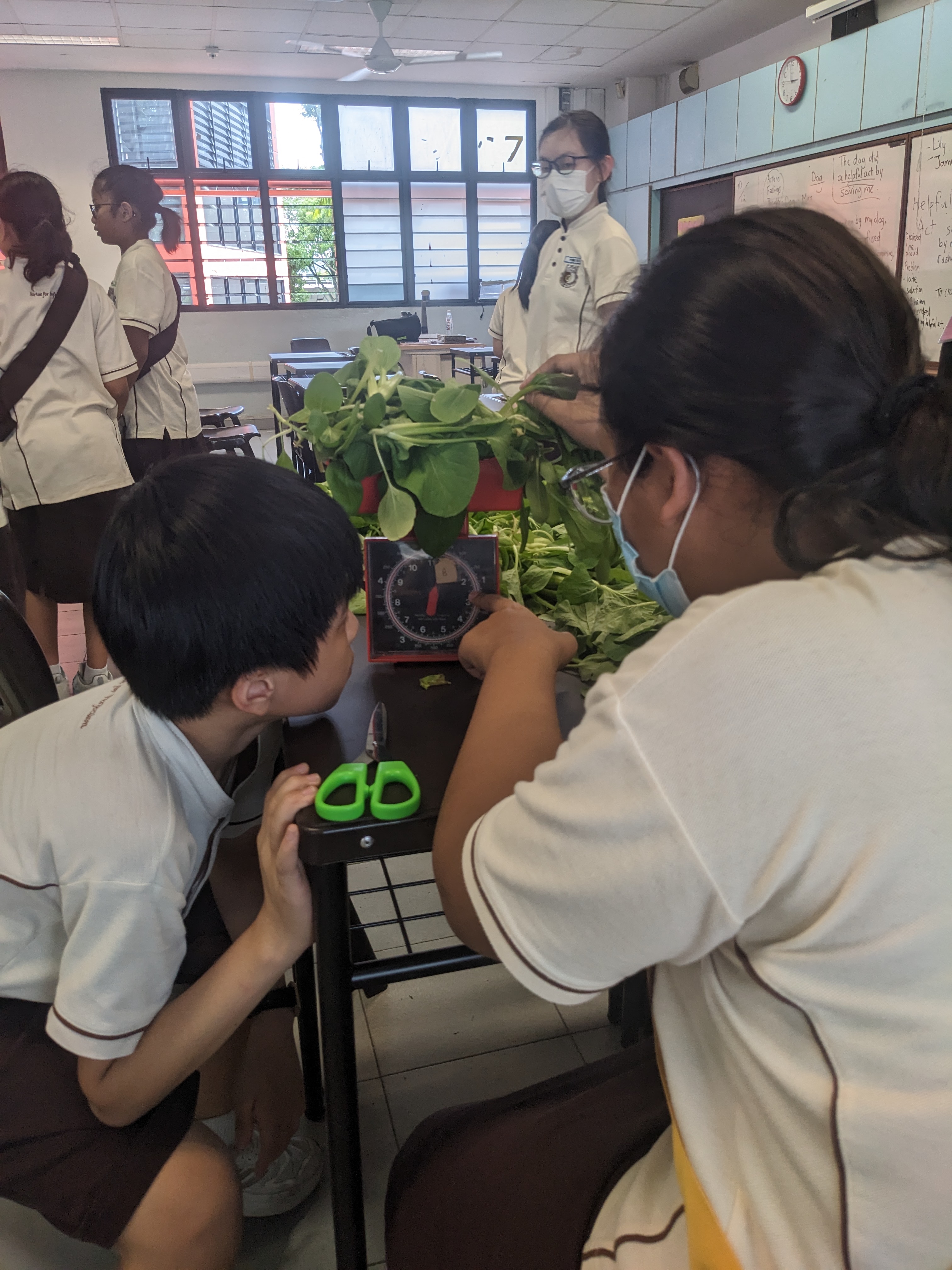 Photo via Daniel Seow.
Photo via Daniel Seow.
There was a fair bit of enthusiasm among the students, with all hands on deck.
This particular student was deep in concentration during the packing process, even giving his group mate advice on how to do it more efficiently.
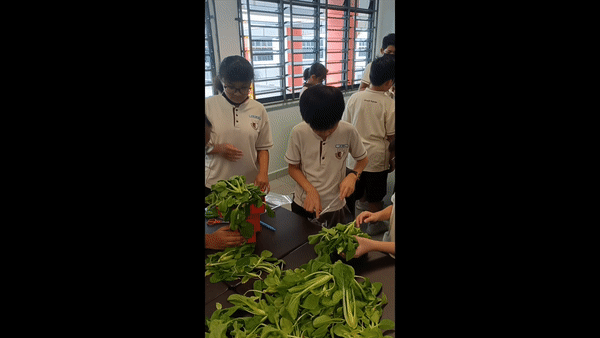 Video via Daniel Seow.
Video via Daniel Seow.
The final step is to label the individual packets. The customised labels contain a short poem and the words "With love from Boon Lay Garden Primary School".
These packed vegetables are designated for the nearby community fridge at Block 190 Boon Lay Drive, and students will be assigned to bring them over to the fridge.
When there is an abundant harvest, students bring some vegetables home.
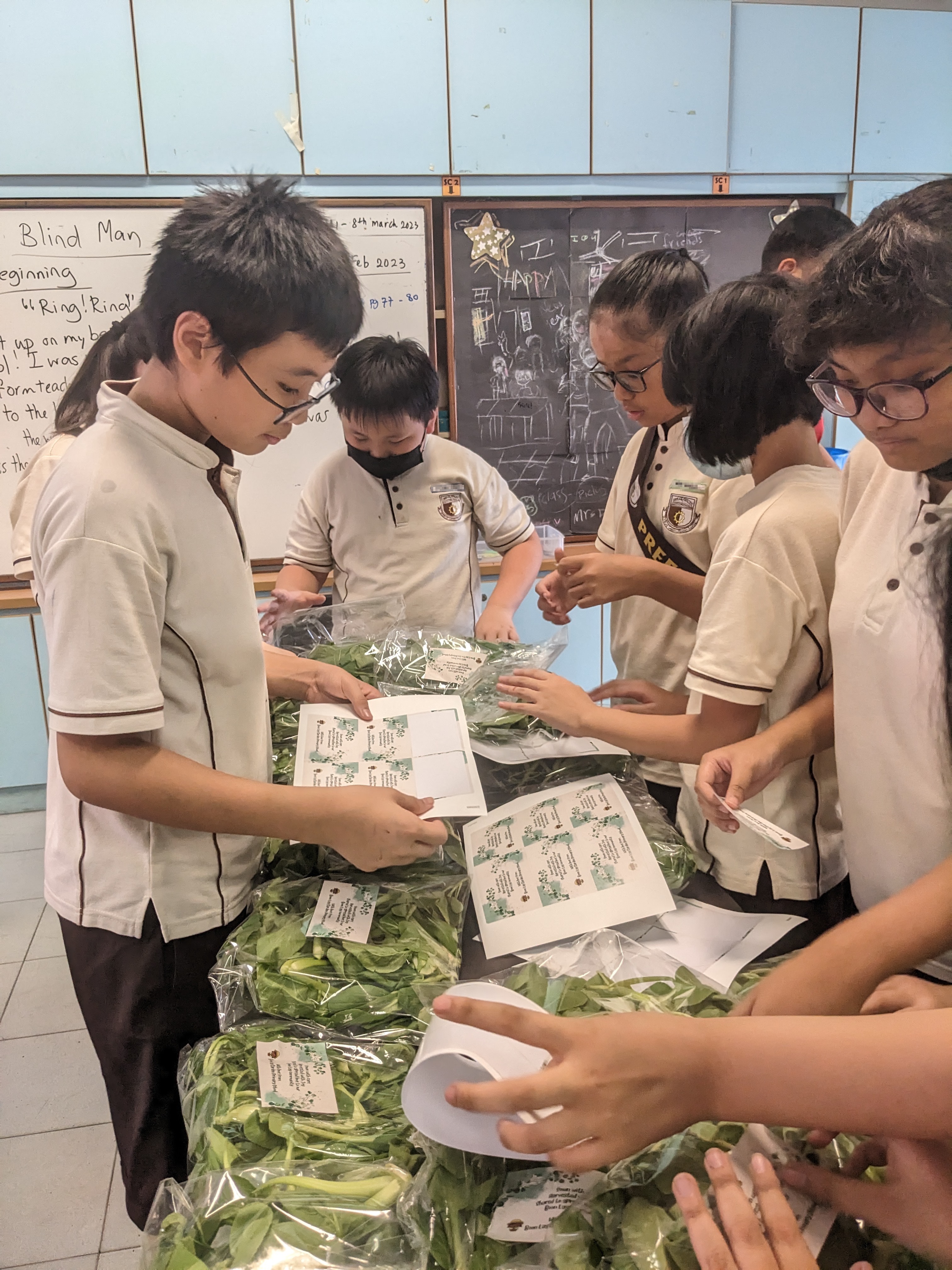 Photo via Daniel Seow.
Photo via Daniel Seow.
I asked the students what their favourite activity in the Environmental Club is. "Harvesting, of course!" one student said.
They get to harvest the vegetables approximately twice a year.
Before the plants get to that stage, the students routinely check them for pests. They have encountered insects such as ladybugs, caterpillars and mealybugs.
They also spray organic insecticide on the plants, which is made from chilli powder, water, soap and oil. This is supposed to be better than the commercial variant as it doesn't contain as many chemicals.
The students shared that they would love to grow spinach, potatoes, lavender, mint leaves or even strawberries, if possible.
One can dream, right?
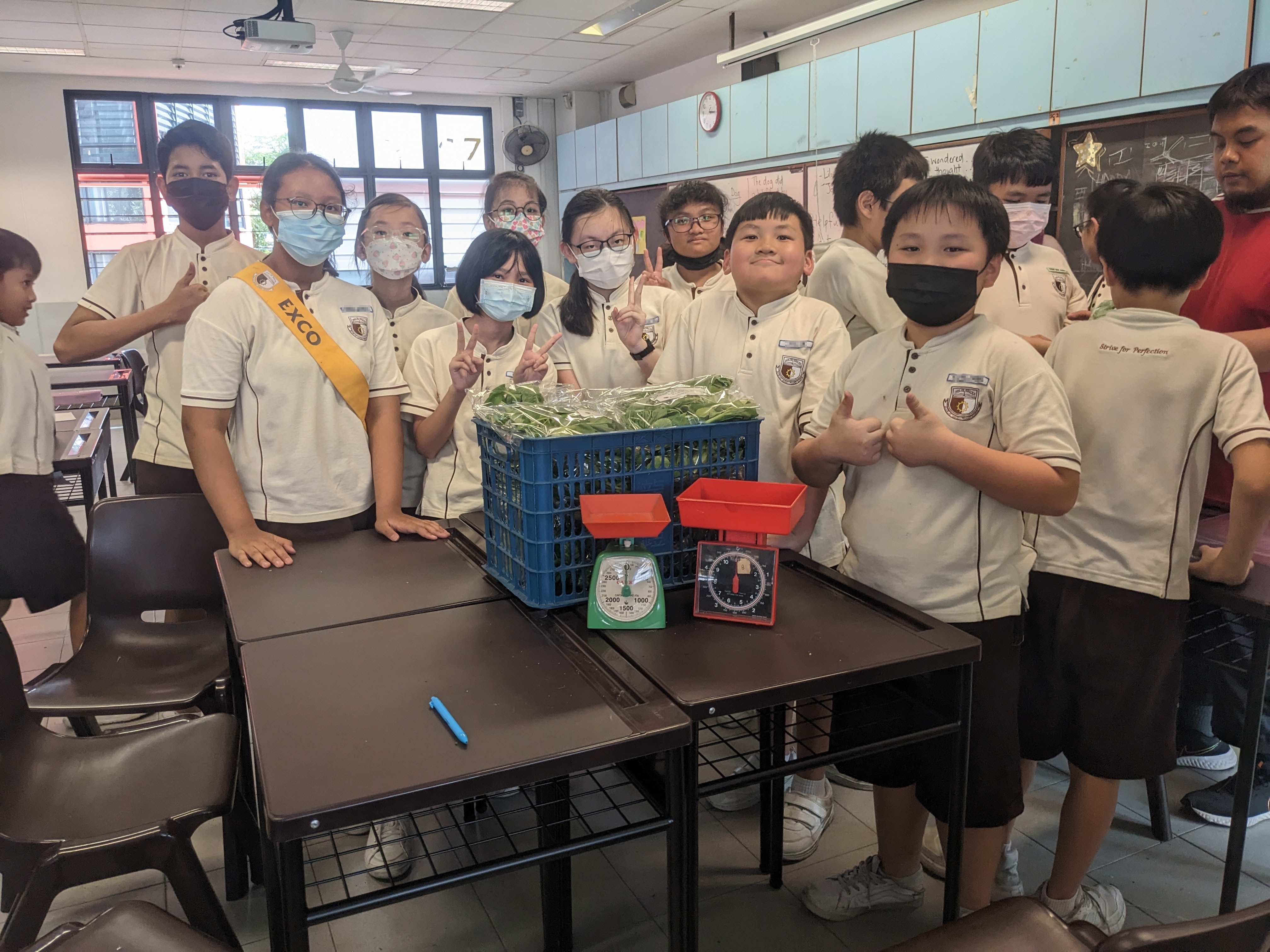 The Environment Club students with the finished packs displayed proudly on the table. Photo via Daniel Seow.
The Environment Club students with the finished packs displayed proudly on the table. Photo via Daniel Seow.
The hydroponics farm
The school also has a mini hydroponics farm perched on one of its rooftops, which was a later addition in June 2022.
This comprises two greenhouses, each with a hydroponics set-up.
Phyo, a student leader from Class 6 Resilience, explained that it is a closed-loop gravity flow system, as "the water pump brings the (nutrient-rich) liquid up through the pipes, and using gravity, it flows down through the bottom pipes back into the tank."
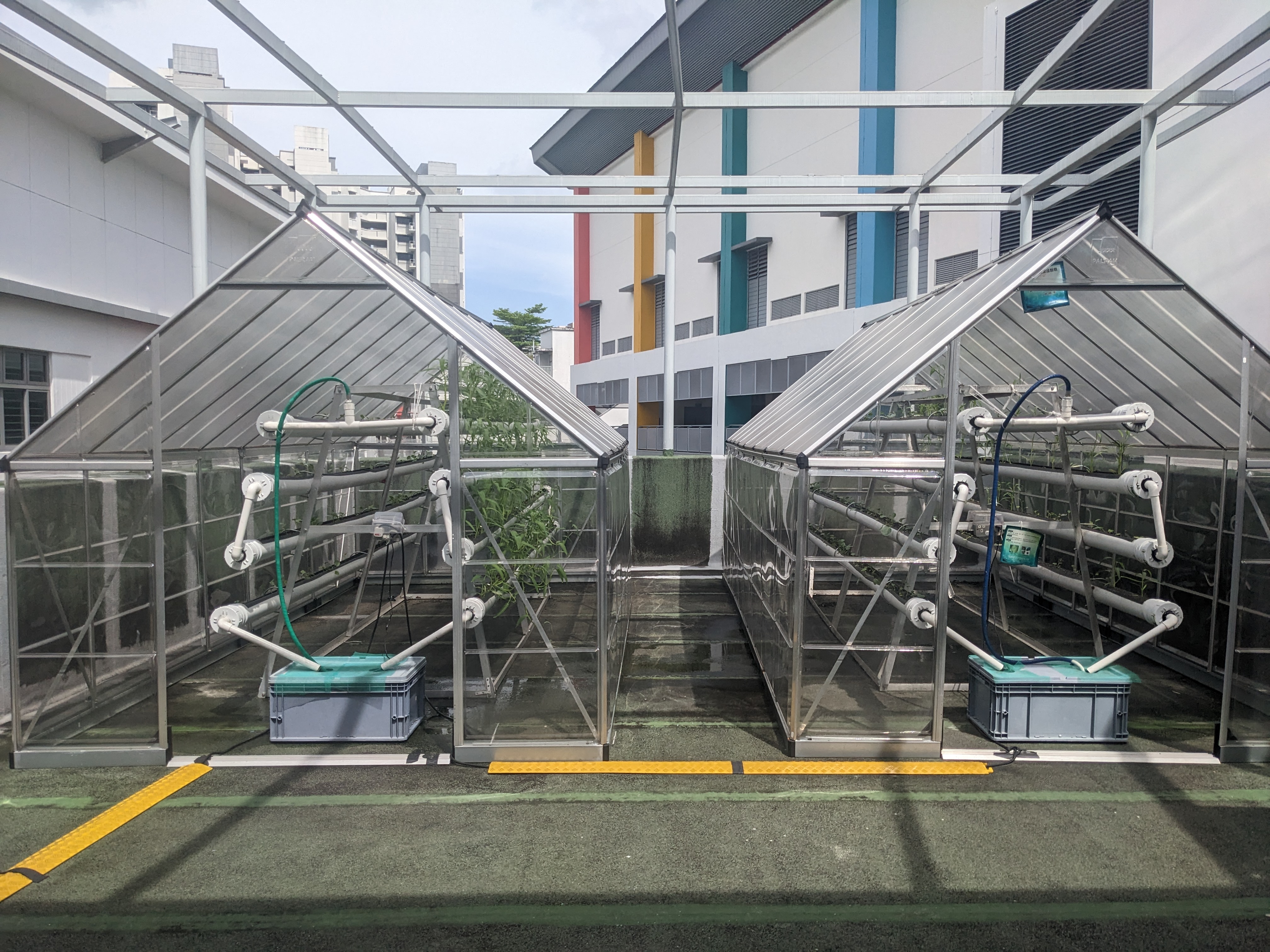 Photo via Daniel Seow.
Photo via Daniel Seow.
Similar to the grow towers, students have to check for pests, and spray insecticide. It can take up to half an hour to check the plants, around 200 to 300 stalks, in both hydroponics systems.
On top of this, students on hydroponics duty have to top up the water level in the tank at least once a week and add fresh nutrients into the hydroponics solution.
Jia Nan, a student leader from Class 6 Responsibility, shared that he has learnt many values such as "resilience and cooperation" from this farming experience.
"While growing plants can sometimes be tiring and difficult, the hydroponics system made the work much easier," he said.
The plant of choice for this hydroponics system is kang kong. A quick peek into the greenhouse revealed to us that the plants were flourishing, and we were told they will be ready for harvest soon.
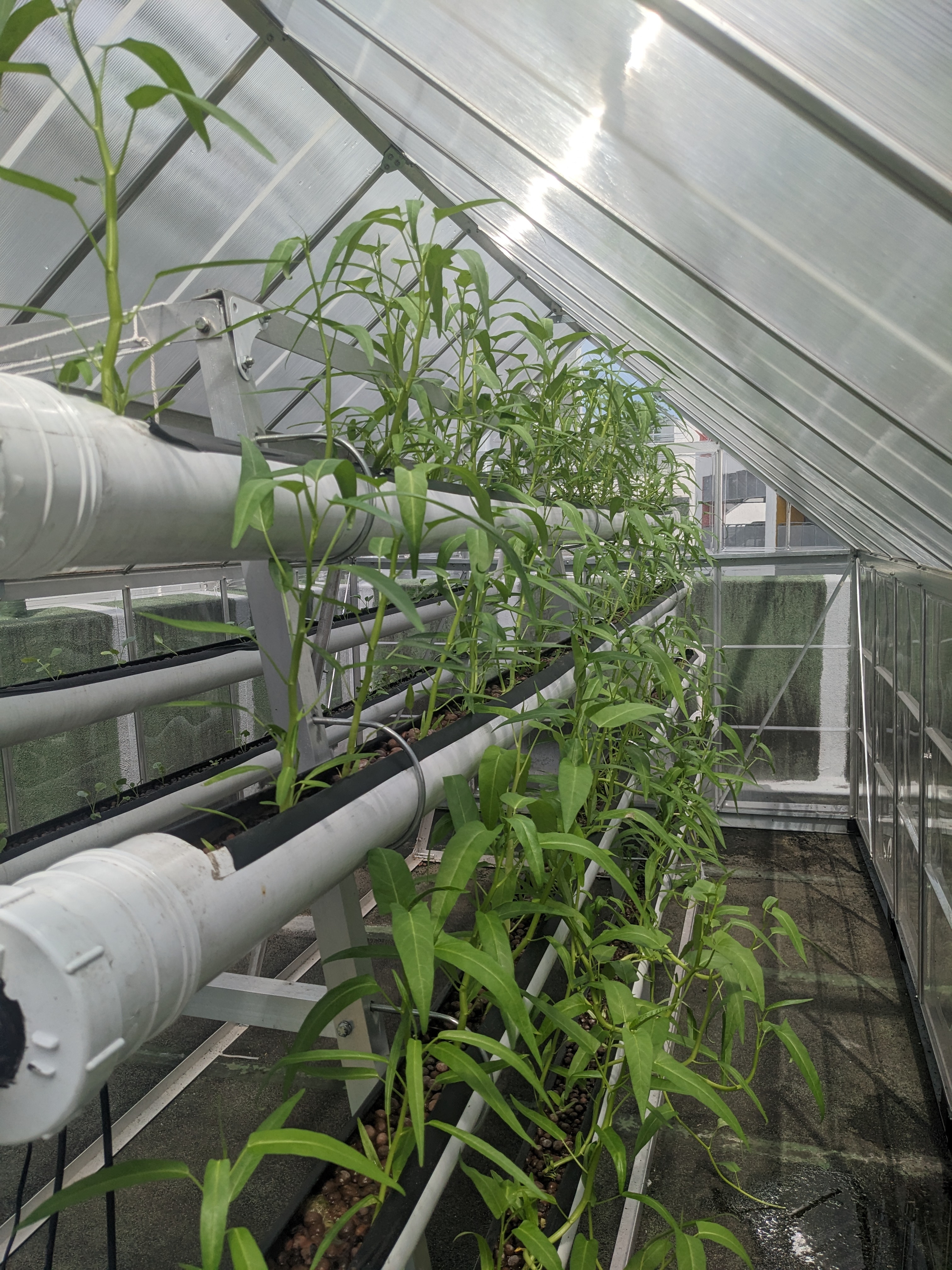 Photo via Daniel Seow.
Photo via Daniel Seow.
Shaun said they chose kang kong as it has a relatively short harvest time of six to seven weeks. This way, students will be able to see the plants grow steadily, and experience harvesting the fruits of their labour.
"We all had our own inspiration"
Alongside Shaun, we interviewed two other teachers, Lim Pei Yiing and Evelyn Poon, who have been involved in the project since its inception.
"We all had our own inspiration," he said.
Shaun told us that he wanted to inculcate the importance of environmental education in the younger generation as they will be the ones that will experience more disruptions fueled by climate change.
Inspired by the Singapore Green Plan 2030 and MOE’s Eco Stewardship Programme, he wanted to have more outdoor learning spaces to provide opportunities for experiential learning beyond the classroom. He hopes that these experiences will make students more aware of sustainability concepts.
Lim, on the other hand, dabbles in farming and has her own hydroponics set-up at home.
"I basically Googled and did my own research, setting it up in my free time to grow my own vegetables. It's a simple set-up, and I try to use recycled plastic bottles," she shared.
She grows vegetables such as lettuce and xiao bai cai, and has had two harvests so far.
For Poon, farming started out as a Covid hobby.
During the circuit breaker period in 2020, she had "a Primary 1 son running around at home and wanted to do something to engage him."
Armed with a couple of bags of vegetable seeds, they started growing vegetables together.
With their experience in farming, Poon and Lim were amongst the teachers who showed interest in the farming project.
"It all came together through keen interest in learning about, practising and contributing to a sustainable Singapore, " Shaun reflected.
A curriculum focused on sustainability
With support from their principal and vice principals, the team of teachers went through several rounds of discussion and planning.
In the midst of it, they saw how the farming project could be aligned to the school's curriculum.
For the Primary 4 level, the focus is on reducing food wastage.
Through videos and worksheets, teachers explain concepts like land scarcity, and help the students to visualise the amount of food that is wasted.
Then, they experience farming first-hand.
"We brought in the farming process to help them experience for themselves the effort that goes into food production. That way, they will treasure it more," Poon said.
Leading into Primary 5, the focus shifts to water conservation.
Lim explains that students are exposed to hydroponics as a sustainable farming method that saves water. This is because the closed-loop system reduces water loss.
That said, students get to see that some water will still be lost to evaporation, which contextualises that concept to the real world.
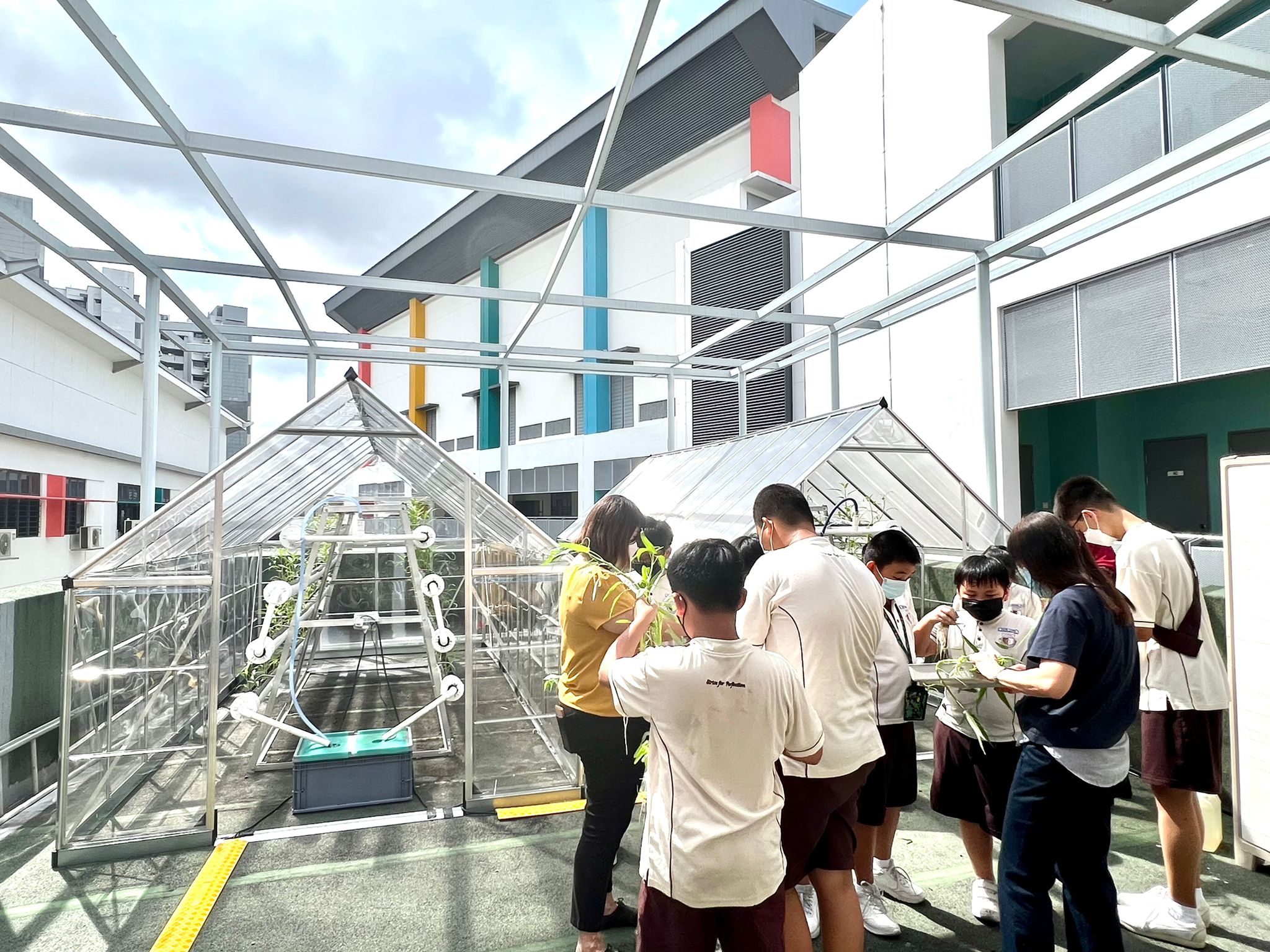 Primary 5 students helping out at the hydroponics farm - via BLGPS on Facebook.
Primary 5 students helping out at the hydroponics farm - via BLGPS on Facebook.
This year, the team is also redesigning the curriculum to include elements of design thinking and problem solving.
For example, students may be tasked to come up with a better water-saving design to enhance the current system.
Part of their Project Work requirements
Interestingly, all Primary 4 to Primary 6 students in the school need to be involved in farming as part of their Project Work (PW) requirements.
Students are regularly rostered to help for at least one hour a week in Terms 2 and 3, while the Environmental Club members pick up the slack in Term 4.
They will be able to see the progress of the plants from germination all the way to the harvesting stage.
Poon shared that this develops hands-on skills, especially for young kids who have to learn how to "gingerly handle the seedlings from the germination tray (and plant them in) the grow towers".
 Primary 4 students tending to the young plants in the grow towers - via BLGPS on Facebook.
Primary 4 students tending to the young plants in the grow towers - via BLGPS on Facebook.
Part of the PW project also involves completing a log sheet. Students are required to check on the plants daily, and write down or draw their observations.
Afsheen, a student leader from Class 5 Integrity, shared that she would go down during recess to check on the plants, looking out for pests or yellowing leaves.
"I really liked planting the seedlings," she added, "And watching (them) grow every day."
Afterwards, each group of students is tasked to prepare a deck of slides about their experience, and selected groups are chosen to present during morning assembly.
"This is to develop students to be advocates to their schoolmates, parents and communities on issues such as food wastage," Shaun shared.
Off to the community fridge
The farm is also a way for the teachers and students to give back to the community.
Together with two students from the Environmental Club and Loo Hui Wen, the Subject Head for Values in Action, we made our way to the community fridge at the void deck of Block 190.
When we arrived, there was already a group of residents waiting expectantly for us.
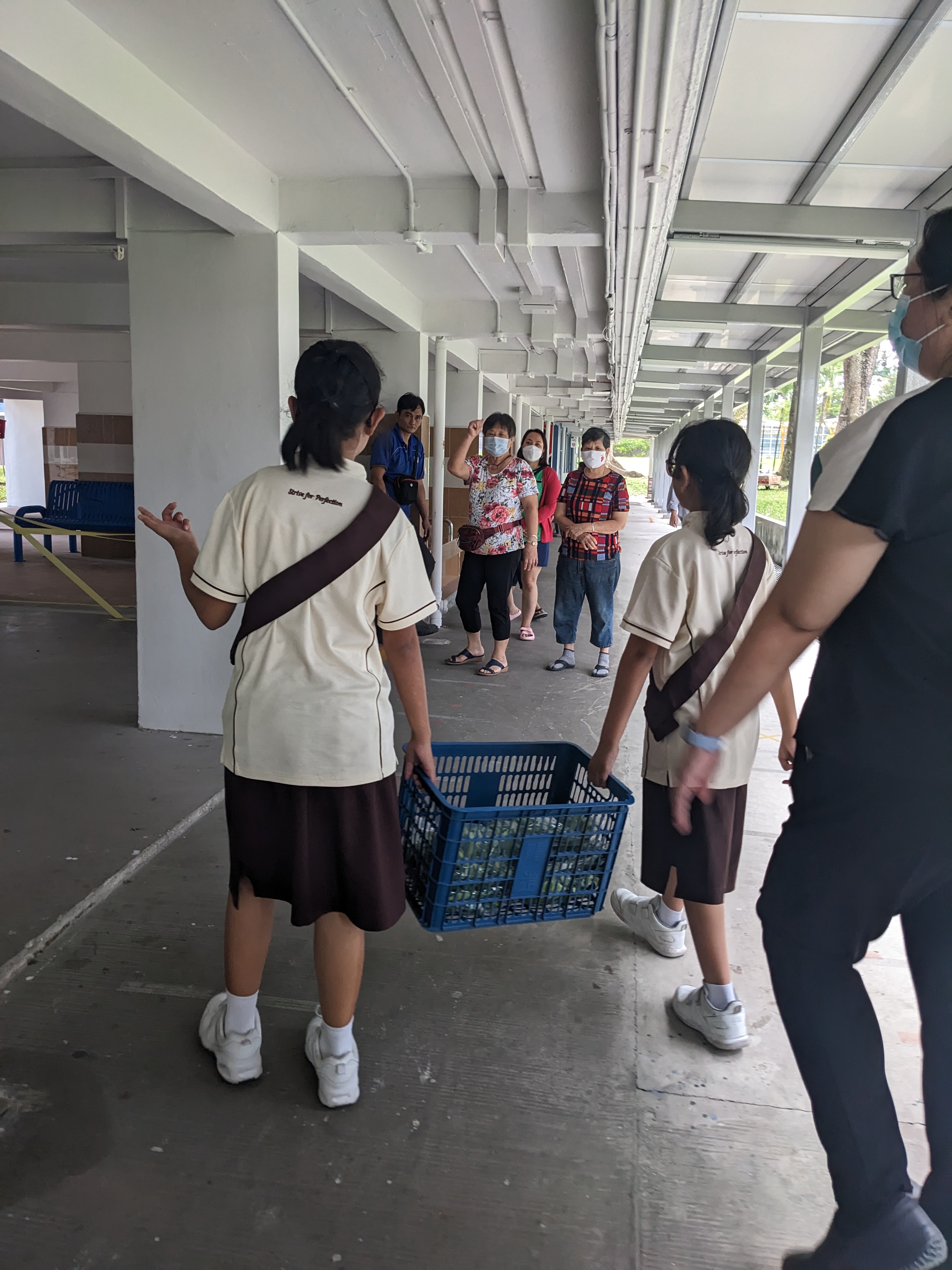 Photo via Daniel Seow.
Photo via Daniel Seow.
The students stacked the bags of produce neatly in the fridge, with the assistance of the residents and representatives from the Boon Lay Zone D Residents' Committee (RC).
The RC representative told us that they are also awaiting the produce from River Valley High School and Boon Lay Secondary School.
Both schools are also involved in farming projects and are regular contributors to the community fridge.
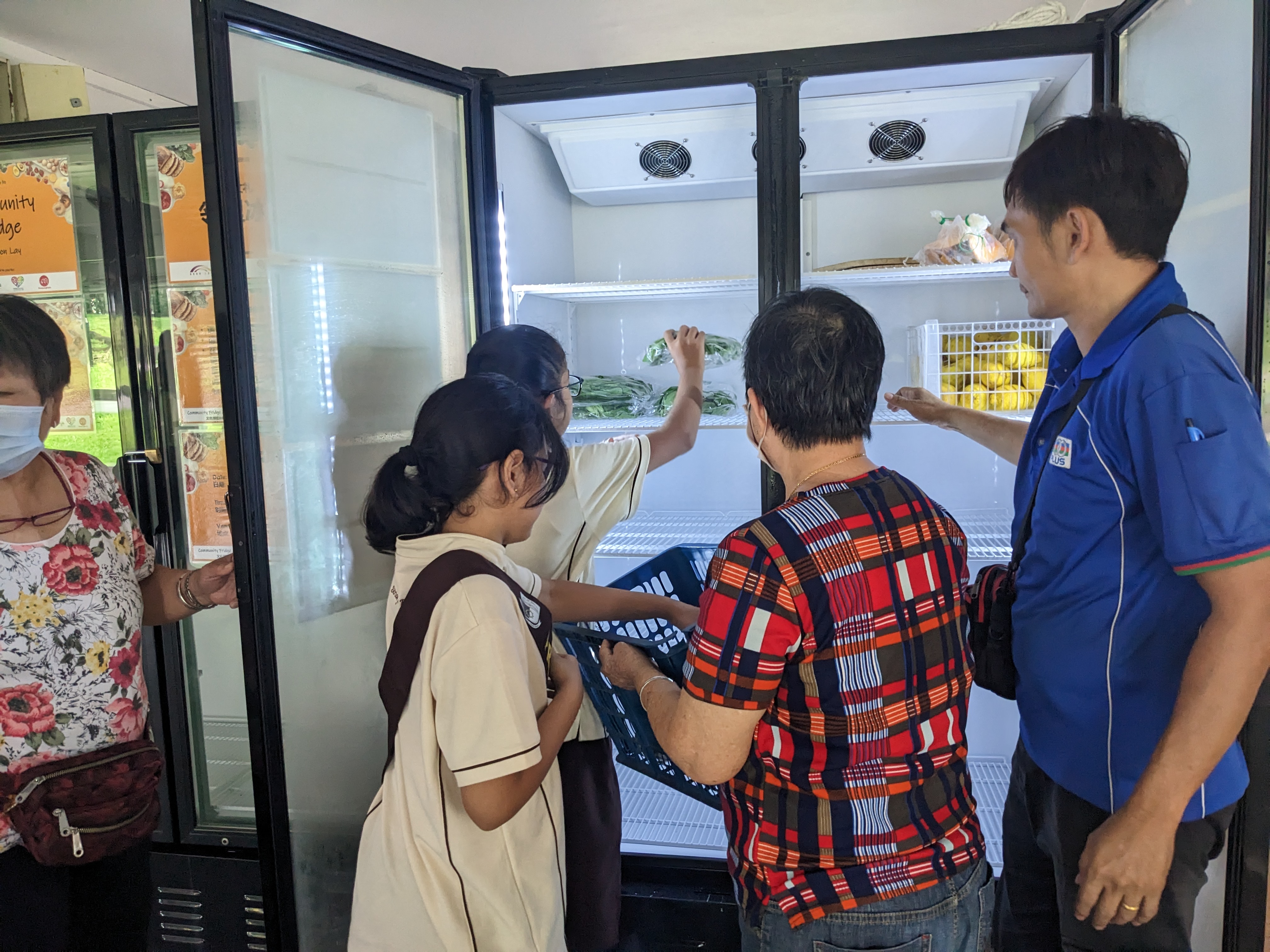 Photo via Daniel Seow.
Photo via Daniel Seow.
Food distribution happens from 11am to 1pm on Tuesdays and Fridays, the RC representative shared.
"There will be very long queues," he added, stretching out his arms for emphasis.
Meanwhile, the residents were all smiles. One of the ladies told us, "Wow, the residents here really get to have such a good life. We get to eat well too!"
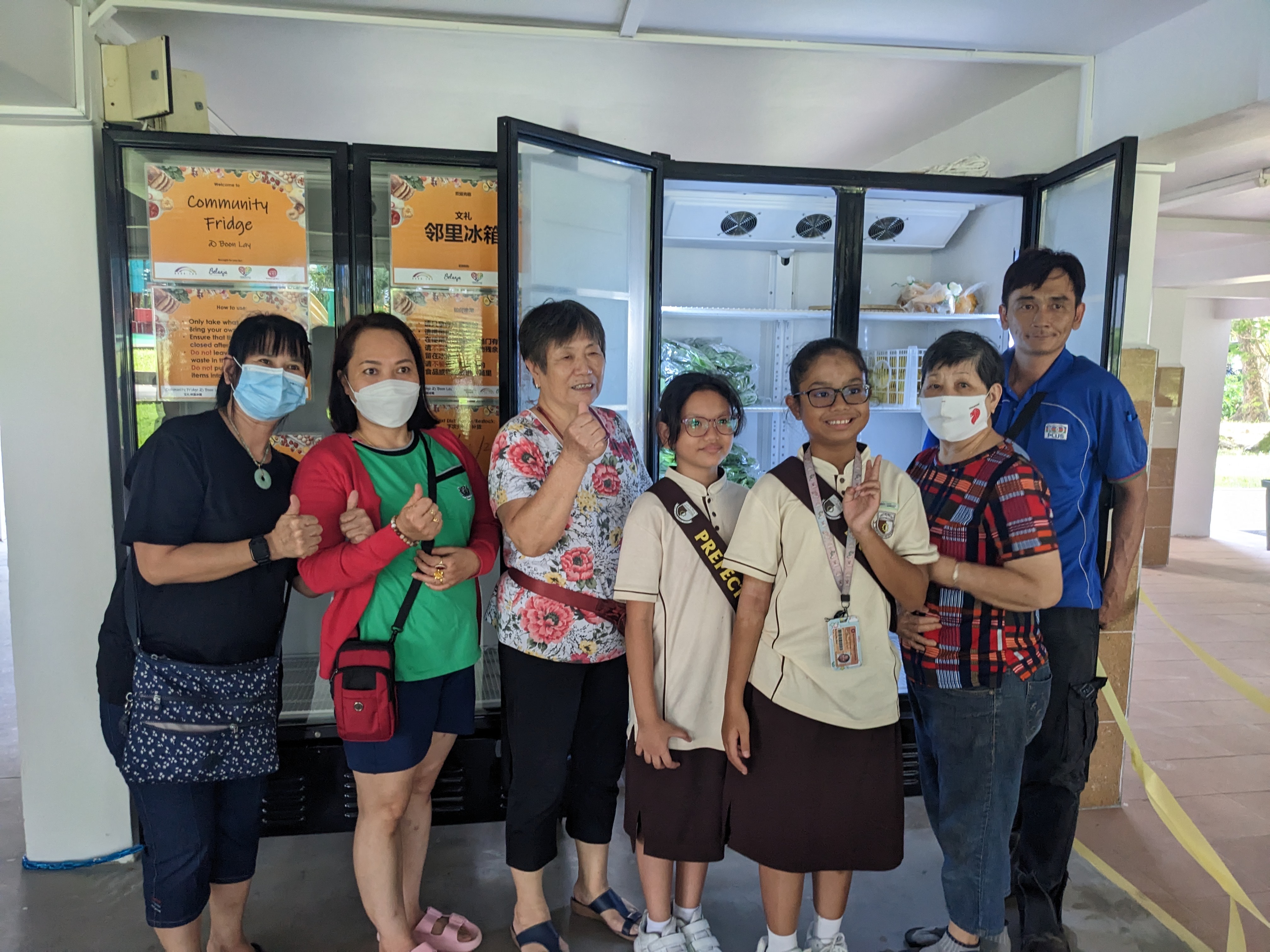 Photo via Daniel Seow.
Photo via Daniel Seow.
It's quite heartwarming to see the gratitude of the residents, and to see that such farming projects can meet educational as well as practical needs.
Perhaps, you will find potatoes and spinach or even strawberries in this community fridge in the future.
Related articles
Top image by Daniel Seow and BLGPS.
If you like what you read, follow us on Facebook, Instagram, Twitter and Telegram to get the latest updates.
